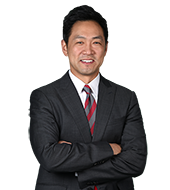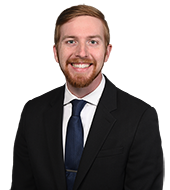COVID-19: California Extends COVID-19 Supplement Paid Sick Leave and Includes Vaccinations
The California legislature has provided California employees with additional paid sick leave benefits to combat the financial impact of the COVID-19 pandemic. The California legislature passed SB 95 on Thursday, 19 March 2021, and Governor Gavin Newsom signed the bill into law just one day later, on Friday, 20 March 2021. SB 95 provides supplemental sick leave benefits to certain employees needing to take leave for various reasons prompted by the COVID-19 pandemic. While SB 95 is not the first legislative effort providing COVID-19 supplemental sick leave benefits, this new law has three critical components that differentiate it from previous COVID-19 supplemental sick leave policies that have existed on the federal, state, and local level. First, SB 95 applies to a greater number of California employees than previous legislative efforts. Second, SB 95 allows employees to take COVID-19 supplemental sick leave for new purposes, including for vaccinations. Third, SB 95 applies retroactively to require employers to compensate certain employees who previously took unpaid leave for COVID-19 reasons.
SB 95 expands the scope of employees entitled to receive supplemental paid sick leave for COVID-19 reasons. Last year, the federal government enacted the Families First Coronavirus Response Act (FFCRA), which provided supplemental paid sick leave benefits to workers affected by COVID-19 who worked for employers with fewer than 500 employees. Governor Newsom subsequently issued Executive Order N-51-20, which expanded these benefits to food sector workers. Many local jurisdictions throughout California chose to enact their own paid sick leave ordinances to provide supplemental paid sick leave benefits to employees in other industries who did not qualify for benefits under FFCRA or Executive Order N-51-20. With the expiration of FFCRA at the end of 2020, however, the only employees able to take supplemental sick leave in 2021 were those who worked in local jurisdictions that had extended the deadlines of their ordinances. SB 95 will cover any employees statewide who are either unable to work or telework for an employer due to specified reasons related to COVID-19, but the law applies only to employers who have more than 25 employees.
SB 95 also expands the purposes for which covered employees can choose to use their COVID-19 supplemental paid sick leave benefits. As FFCRA, Executive Order N-51-20, and the various local ordinances all became effective prior to the mass distribution of COVID-19 vaccines, employees could not use their supplemental paid sick leave benefits to become vaccinated. SB 95 allows covered employees to use their supplemental paid sick leave benefits in order to attend vaccination appointments and if they are experiencing symptoms from a COVID-19 vaccine that prevent them from working or teleworking. Covered employees can also use their supplemental paid sick leave benefits for other specified purposes, including but not limited to caring for themselves or family members who are subject to quarantine requirements.
Finally, the law’s provisions apply retroactively to 1 January 2021. SB 95’s retroactivity requires an employer to compensate any employee who took unpaid time off prior to the law’s enactment so long as the employee took this time for one of the specified purposes. For example, an employee who took unpaid time off in February 2021 to attend a vaccination appointment can now receive supplemental paid sick leave benefits. The total number of hours an employee can claim for COVID-19 supplemental paid sick leave benefits varies based on the employee’s work schedule. If the employee has a regular work schedule, then the employee’s COVID-19 supplemental paid sick leave equals the total number of hours they worked over the past two weeks up to a total of 80 hours. If the employee’s schedule varies, the employee’s supplemental paid sick leave will become the average number of hours the employee worked in a two-week period over the past six months. Regardless of how the hours are calculated, SB 95 calculates the amount of pay at the employee’s “regular rate,” but it does not require an employer to pay out more than US$511 per day or US$5,110 in the aggregate to an employee in supplemental paid sick leave benefits. These benefits expire on 30 September 2021, but the law permits an employee who is using supplemental paid sick leave benefits at the time the law expires to take the full amount allowed.
For further information about SB95, please contact your employment counsel. For more information on what California and other states have done in efforts to combat COVID-19, please see our COVID-19 resources page.
This publication/newsletter is for informational purposes and does not contain or convey legal advice. The information herein should not be used or relied upon in regard to any particular facts or circumstances without first consulting a lawyer. Any views expressed herein are those of the author(s) and not necessarily those of the law firm's clients.






